news topics
-
share this site
ecology & environment
economy
life
follow me
Author Archives: Gabriela
Time to End War on Earth
I believe that my own writing cannot measure up to convey my core believes, thinking and message any better than the people I will feature on my site.
I start the series with a woman I admire from the bottom of my heart: Dr Vandana Shiva (learn more about her here: http://www.vandanashiva.org/
below are excerpts (edited) of her Sydney Peace Prize Talk, in November 2010 – to listen to the entire speech : Vandana Shiva : Sydney Peace Prize Talk from WisdomKeepers Productions on Vimeo.
Dr Vandana Shiva’s Sydney Peace Prize Lecture: Time to End War on Earth
“The blindness of mechanical reductionist thought is constantly projecting as abundance systems that are creating scarcity! And nowhere is this more evident than in agriculture, where agriculture has become, literally, an everyday war against species, against farmers, against the land and even against those who eat by assaulting our bodies.
There are three levels of violence involved in non-sustainable development: 1. the violence against the earth = the ecological crisis; 2. the violence against people = poverty, destitution and displacement; 3. the violence of war and conflict = exploitation of resources (commodities and human) by the powerful.
The elevation of the market and money (man-made capital) to the pole position of the organizing principles for societies and the only measure of sucess and well-being has led to the decay and destruction of the processes that maintain and sustain life in nature and society.
The “richer” we get, the poorer we become ecologically and culturally. The growth of affluence, measured in money, is leading to a exponential growth in poverty at the material, cultural, ecological and spiritual levels.
The real currency of life is life itself and we need to ask ourselves whether we are mere money-making, resource-guzzling machines or the custodians and caretakers of an entire ecological system. Do we have a higher purpose?
I believe that ”earth democracy” enables us to envision and create living democracies based on the intrinsic worth of all species, all peoples, all cultures – a just and equal sharing of this earth’s vital resources, and sharing the decisions about the use of the earth’s resources.
Making peace with the earth was always an ethical and ecological imperative. It has now become a survival imperative for our species.”
I hope that many more of you will start questioning how we conduct our lives – and consciously change the way you do live – and through these actions contribute and hopefully ensure that future generations have a life worth living and enjoying.
Posted in diversicum
Leave a comment
soil 2
Soil Biodiversity: The Invisible Hero
“Soil is the invisible biodiversity hero. We rely on healthy soils for some of the most fundamental ecosystem services, and without them life on our planet would grind to a halt. We share our soils, so I am convinced of the need for common legislation in this area. I am therefore calling on Environment ministers to put in place a sound regulatory framework to protect this most precious resource, and ensure we use it wisely.”
- EU Environment Commissioner Janez Potočnik
2010 was the UN International Year of Biodiversity. the European Commission has released a report titled:
Soil Biodiversity: Functions, threats and tools .
Soil is a fundamental element
Soil is a living resource that provides numerous essential services, releasing nutrients in forms that can be used by plants and other organisms. When this recycling function is impaired, agriculture, forestry and ultimately all life on Earth is threatened.
The micro-organisms contained in soil contribute to water purification and help remove pollution and pathogens. The loss of this service would reduce the quality and quantity of ground and surface waters, increasing the risk of erosion and landslides in mountain areas, and of flooding in lowland areas.
Soil also contains the second largest carbon pool on the planet. The loss of soil biodiversity reduces the ability of soils to regulate the composition of the atmosphere, diminishing their role in counteracting global warming.
Soil organisms constitute a major source of chemical and genetic resources. Antibiotic resistance develops fast, so the demand for new pharmaceutical products is almost unending, and soil biodiversity can be an important source. At present, only 1% of soil microorganism species are known.
Current threats to soil biodiversity
The diversity of soil organisms is under threat from inappropriate agricultural practices, over-grazing, vegetation clearing, forest fires and poor irrigation practices. Land conversion, from grassland or forest to cropped land, results in rapid loss of soil carbon, which indirectly enhances global warming.
Urbanisation and soil sealing are a further threat, with concreting effectively killing the life in the soil beneath.
Existing policies related to soil biodiversity
Few countries have strong legislation to protect their soils, and at present no legislation or regulation specifically targeted at soil biodiversity exists at international, EU, national or regional level.
Efforts to conserve Soil Biodiversity in Europe has important lessons for Asia too. Asia is an agricultural hub, with billions of people depending on the soils in some form or the other for livelihoods. Asia requires a legislative framework to protect soils, a return to organic and biodiverse farming methods which conserve soil while enabling people to sustain themselves.
http://www.youtube.com/watch?v=n8_dN5YWnyc&feature=player_embedded#
http://www.youtube.com/watch?v=y0u_D5hmK6I&feature=related
Posted in english blog
Leave a comment
the green corridor – an unreasonable approach
last night’s meeting of the local chapter of “The Green Drinks” prompts this post and two simple requests:
firstly, asking for your support for the NSS petition to the Government for the future use of the railway land and
secondly, discover the unreasonable being inside of you and set it free!
captured your interest now? then let me explain:
we listened to a brief presentation by Nature Society of Singapore on the KMT Train tracks connecting Singapore to Malyasia, from Tanjung Pagar Station right up to Woodlands, including the Jurong sidetrack.
this “Green Corridor” - a beautiful, natural spine with it’s own incredible biodiversity (including community gardens!) – through this concrete- and glass-city -jungle, is in dire need of protection as the train service will end in June 2011 and revert into state land.
the greenery is too narrow to be converted into the usual condos and malls and Nature Society is now looking for great ideas to make use of the 40 km long tracks, an area as large as the Botanical Gardens!
Singapore is a thoroughly structured, planned and controlled city state – I suggest to try something really different for once: Do nothing at all!
set your citizens free - let them define the space, allow them to realize their “green” dreams and create places for recreation, sport, play, gardening, food production and a revival of the Kampong life!
let the residents reclaim ownership of a piece of their land, their city state – after all, it is their home, let them decide!
I am often told of having too high expectations and standards (of myself and others), of being utopian and unreasonable in ideas/approach and expectations for change in the way we lead our lives as communities and individuals.
“reasonable people adapt themselves to the world, while unreasonable people attempt to adapt the world to themselves. when we’re talking about changing the world for the better, we’re also talking about being completely unreasonable people.
being unreasonable can often be the only approach to work some sense into people and help them see how shifting the way the world works is far more beneficial than trying to scale possibility down into something that will fit inside a far too reasonable world.
sometimes it’s fun, sometimes it’s tough, and much of the time it’s completely worth it.”(Jill Vialet – a kindred spirit…)
“all progress depends on unreasonable people” – and that would certainly be a very novel approach to progress in Singapore…
let us be surprised, and maybe even awed, by the inspiration and creativity this simple freedom could transform – in visible and invisible ways …
Posted in diversicum, english blog
Leave a comment
drop dead red
the color red symbolizes vitality, sensibility and the power of life – it’s pole position in the color wheel is well deserved!
nature – humans, animals, plants, earth, water etc – communicate through color. If all insects responsible for pollination and ensuing reproduction would be color blind, our planet would be so much more sparse and monotonous.
tropical Singapore provides an evergreen backdrop all year round – setting the perfect stage for a huge variety of flowering garden plants in all shades of red !
walking trough parks and nature reserves, or neighbourhood gardens, the flowering gingers, African Tulip trees, the Heliconias and Caesalpinias, the Clivias and Coral trees… can be admired all year round.
a beautiful, eye-catching contrast to the green foliage tapestry
Posted in plants
Leave a comment
soil
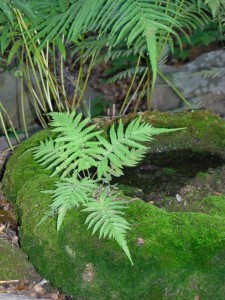
after reading the well written and researched “Green Gone Wrong – How our Economy is Undermining the Environmental Revolution” by Heather Rogers, I re-read the book
Natural Capitalism: The Next Industrial Revolution
by Paul Hawken, Amory B. Lovins, and L. Hunter Lovins (Nov 1, 2000- ISBN 0-316-35316-7)
the short answer to the question “what is natural capitalism?”: a way of thinking that seeks to apply market principles to all sources of material value, most importantly natural resources.
the authors have two related goals: first, to show the vast array of ecologically smart options available to businesses; second, to argue that it is possible for society and industry to adopt them.
they call their approach natural capitalism because it’s based on the principle that business can be good for the environment.
below are some direct quotes from the book, which I highly recommend reading, the more prominent and looming the uncertainty of survival of living forms and systems become.
quote
Climate
From space, the earth is blue because it is covered mainly by water. However, where it not for certain trace gases in the atmosphere, the earth would be a frigid icy white, and life as we know it would not exist.
Our dependable local star radiates energy in all directions, a bit of which falls on our own planet. As it turns and wobbles and wanders through an unimaginably chilly universe, the earth soaks in solar warmth. Billions of years of this cosmic rotisserie nurtured an enormous diversity of living forms and processes that, through photosynthesis and respiration, helped create an atmosphere. It is that band of gases that keeps life as we know it pleasantly warm.
The earth’s atmosphere seems vast to a person sheltered beneath it, but astronauts and cosmonauts see how tissue-thin it is against the black vastness of space.
Conservationist Jacques Cousteau and David Brower give us this helpful perspective:
“If the earth were the size of an egg, then all the water on the planet would be just a drop, all the air, if condensed to the density of water, would be a droplet only one-fortieth as big; all the arable land would be a not-quiet-visible speck of dust.
That drop, droplet, and speck are all that make the earth different from the moon.”
Natural capital
Natural capital comes about not by singular miracles but as the product of yeoman work carried out by thousands upon thousands of species in complex interactions. While scientists can identify the organisms that provide such things as food, pharmaceuticals, spices or fiber, no one fully understands their roles in the health of the ecosystem.
The best example of this is the most complex ecosystem on earth – soil.
Soil fertility is maintained by conversion processes carried out buy an extremely large number of organisms, some of which are poorly understood and some of which are unknown. Fertilizers notwithstanding, nutrient flows cannot be maintained without these processes.
Stanford University biologist Gretchen Daily calls the profusion of lie forms in the soil “staggering” – one teaspoon of good grassland soil may contain 5 billion bacteria, 20 million fungi, and 1 million protoctists.
Expand the census to a square meter and you will find, besides unthinkable numbers of the creatures already mentioned, perhaps 1”000 each of ants, spiders, wood lice, beetles and their larvae, and fly larvae, 2”000 each of earth worms and large myriapods (millipedes and centipedes) 8”000 slugs and snails, 20’000 pot worms, 40’000 springtails, 120’000 mites, and 12 million nematodes.
These life forms below ground weigh more than those above ground – the equivalent of a dozen horses per acre.
Besides providing fertility, the soil stores water, holding rain and runoff for later release, feeding streams while preventing flooding.
The fine particles in a pound of clay-rich soil contain about 100 acres of surface area on which to host biological and physiochemical interactions including buffering acidity from rain.
Soils decompose waste and remove litter, transforming animal, plant, and many types of human waste to nutrients and growing mediums.
Soils cleanse and filter pathogens and toxins. Antibiotics were discovered in soil.
Soil and soil organisms play an integral role in the cycling of nitrogen, carbon, and sulfur – the grand cycles that affect every aspect of climate.
The ultimate loop-closers, the basis of planetary metabolism, are the soil microorganism that turn back into nutrient flows everything that falls on or grows within the ground.
In Evan Eisenberg’s metaphor:
“The soil is less a factory than a souk, a casbah, a flea market, an economic free-for-all in which each buyer and seller pursues his or her own interest, and in which every scrap of merchandise – second-hand, seventh-hand, busted, salvaged, patched – is mined for its last ounce of value. Decay is good business because there are nutrients to be extracted and energy to be gained from the breaking of chemical bonds, if the net effect of the activity of the soil biota is overwhelmingly helpful – in fact, vital – to life on street level, it is not because nature has ordained it so, but because the various forms of life above and below ground have coevolved. “
Science can’t understand how plants grow until it understands the ecology of what they grow from. As Donald Worster put it: “we can no more manufacture a soil with a tank of chemicals than we can invent a rain forest or produce a single bird.”
And understanding soil, the ultimate natural capital (the Chinese call it the mother of all things) is in turn the key to turning agriculture from part of the climate problem into part of the solution.
Soil loss – especially the physical loss or biological impoverishment, hence carbon depletion, of humus – is currently far outpacing soil and humus formation and enrichment worldwide.
The interaction between plants and animals, in conjunction with natural rhythms of weather, water, and tides, provides the basis for the cycle of life, a cycle that is ancient, complex, and highly interconnected. When one of its components – say, the carbon cycle – is disrupted, it in turn affects oceans, soils, rainfall, heat, wind, disease.
Today, every part of the earth is influenced by human activity, and the consequences are unknowable.
Since it may not be possible to determine precisely which species are needed to maintain soil or other living systems, there is not way to state with any confidence which organisms we can do without (if any).
Natural capital can be viewed as the sum total of the ecological systems that support life, different from human-made capital in that natural capital cannot be produced by human activity. It is easy to overlook because it is the pond in which we swim, and, like fish, we are not aware we’re in the water.
Only when the services provided by ecosystem functions are unmistakably disrupted do we step back and reconsider.
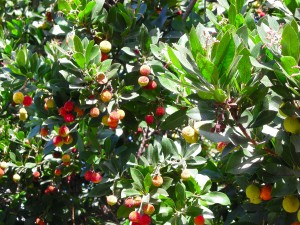
Environment as source of quality
Science provides a necessary basis for business to comprehend the emerging economics of living systems and ecosystem services.
In scientific terms, there is no phenomenon called production, only transformation.
No matter how energy or resources are used, scattered, or dispersed, their sum remains essentially the same, as dictated by the law of conservation of matter and energy.
This law is more than passing interest because it means that the term “consumption” is the abstract figment of economist’s imagination – that it is physically impossible in all processes or transformations.
What is consumed from the environment is not matter or energy but order or quality – the structure, concentration, or purity of matter. This is a critically important concept, because it is “quality” that business draws upon to create economic value.
Instead of focusing on whether physical resources will run out, it is more useful to be concerned about the specific aspects of the quality that natural capital produces: clean water and air, healthy soil, food, animals, forests, pollination, oceans, rivers; available and affordable sources of energy, and more.
If industry removes concentrated and structured matter from the system faster than it can be replaced, and at the same time destroys the means of its creation, namely ecosystems and habitats, it introduces a fundamental problem in production.
Humankind has a long history of destroying its environments, especially soil and forest cover.
In the face of this relentless loss of living systems, fractious political conflicts over laws, regulations, and business economics appear petty and small. It is not that these issues are unimportant but that they ignore the larger context.
Are we or are we not systematically reducing life and the capacity to re-create order on earth?
This is the level on which our discourse should take place, for it is there that a framework for both understanding and action can be formulated. In spite of what such signals as the GDP or the Dow Jones indicate, it is ultimately the capacity of the photosynthetic world and its nutrient flows that determine the quality and the quantity of life on earth.
Industry makes things.
It takes material – generally out of the ground – and processes them into desired forms.
These objects are distributed, sold, used, discarded, and then typically dumped back in or onto the ground.
Because economic consumption doesn’t create or destroy matter but only changes its location, form, and value, the same tonnages that were mined from the ground as resources, treated, transported, made into goods, and distributed to customers are then hauled away again as waste or emitted as pollution.
It its not the supplies of oil or copper that are beginning to limit our development but life itself. Today, our continuing progress is restricted not by the number of fishing boats but the decreasing numbers of fish, not by the power of pumps but by the depletion of aquifers, not by the number of chainsaws but the disappearance of primary forests.
While living systems are the source of such desired materials as wood, fish, or food, of utmost importance are the services that they offer, services that are far more critical to human prosperity than are nonrenewable resources.
A forest provides not only the resources of wood but also the services of water storage and flood management. A healthy environment automatically supplies not only clean air and water, rainfall, ocean productivity, fertile soil, and watershed resilience but also such less-appreciated functions as waste processing (both natural and industrial), buffering against the extremes of weather, and regeneration of atmosphere.
Humankind has inherited a 3.8 billion year store of natural capital.
As present rates of use and degradation, there will be little left by the end of the next century. This is not only a matter of aesthetics and morality, it is of the utmost practical concerns to society and all people.
Despite reams of press about the state of the environment and rafts of laws attempting to prevent further loss, the stock of natural capital is plummeting and the vital life-giving services that flow from it are critical to our prosperity.
Natural capital recognizes the critical interdependency between the production and use of human-made capital and the maintenance and supply of natural capital.
unquote
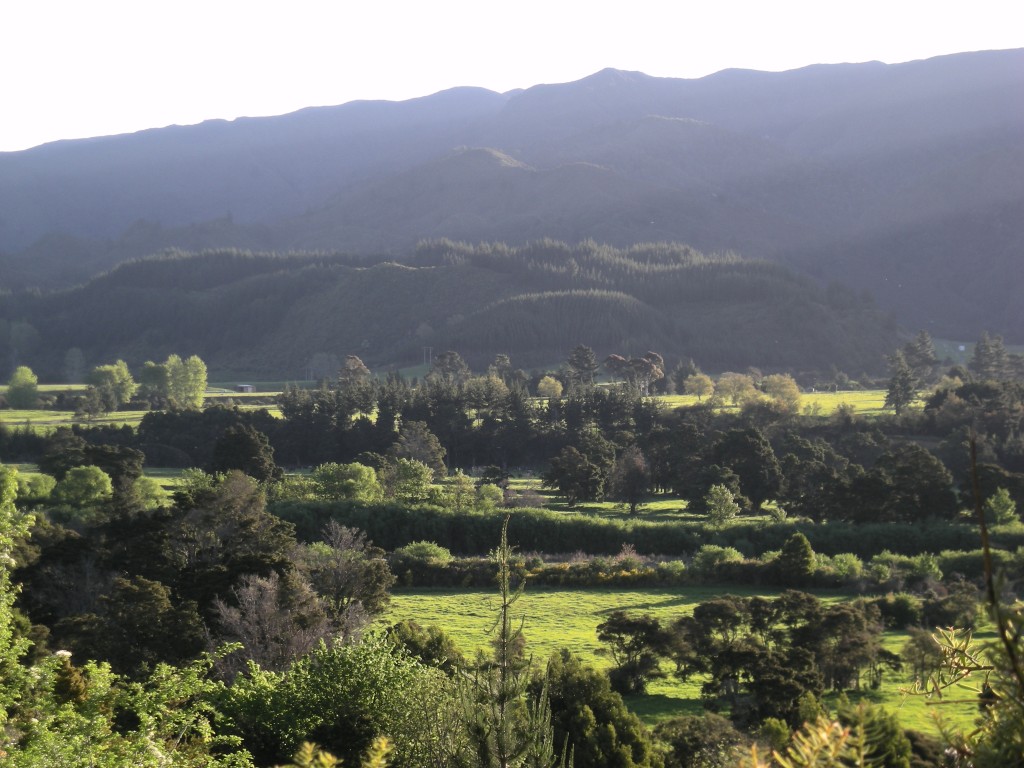
we measure everything by output, disregarding input -but their interdependence is LIFE itself.
Posted in diversicum
Leave a comment
seed spectacular
we encountered this single seed capsule at the Bukit Timah Nature Reserve on New Year’s day while hiking. it is, I believe, a Sterculia species.
there are a few mature trees along Jurong Park Connector, but I have not been able to admire the seed pods so close up ever before.
this single seed decorates a still very small “tree” of only about 1.45 m with two rather tiny branches .
Posted in plants
Leave a comment
African Tulip – Spathodea campanulata
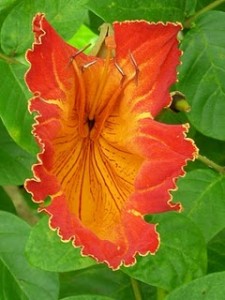
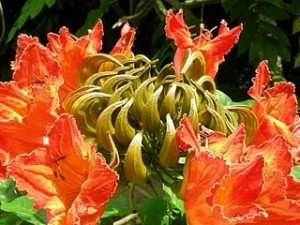
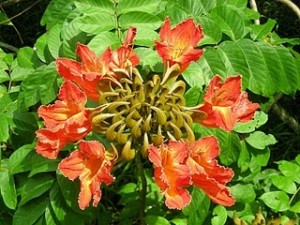 African Tulip trees are very common in Singapore – but one rarely gets to admire their beautiful flowers that close up!
African Tulip trees are very common in Singapore – but one rarely gets to admire their beautiful flowers that close up!
Posted in plants
Leave a comment
in between the silence…
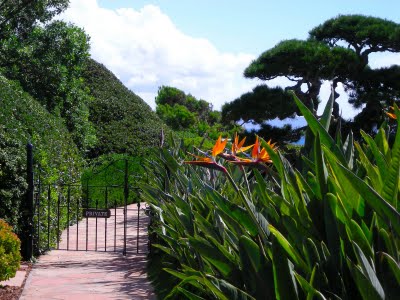 the thoughts I share with you in this post are personal and not necessarily related to my work – but always close to my heart
the thoughts I share with you in this post are personal and not necessarily related to my work – but always close to my heart
I have to admit that this year so far has been unusually quiet …in stark contrast to 2008 which was full of hectic activity and actions and personal tragedies
the loneliness of developing, designing and patenting a planting systems and products all by myself mutated into a bit too much of a solitary experience…
despite quite some efforts and contacts to introduce the concept to major players in the market all over the world, finding a producer for the patented plant container solution prooves a difficult task indeed! the patent for the inventive planting system/concept came along nicely and I will need to file nationally within November of this year – whether- and even more importantly, where – I will attempt the actual filing is still up in the air…mainly because finding a producer for the 13 strong product line has been elusive so far.
so many brilliant ideas and solutions on design and products – any takers?
nature is –besides the love of my life – the centre and source of my well-being: Bukit Timah Nature Reserve walks refresh spirit and “green cleans “the soul, and the familiarity of the botany in the gardens exudes a deep sense of peace, calm and groundedness…
so much of our lives is constantly floating and changing – and this instability rattles me more often than not…
we traveled to New Zealand, a country we hope to call home one day, where I would like to establish a little farm and “return” to the simple life I’ve always dreamed about – a life which would bring full circle the happiest times of my childhood: working in the gardens with my grandmother Louisa, whom I loved most in my entire family.
the first half of 2009 was spent – sensibly and enriching, I believe – to read and learn about food, herbs and spices, medical plants and herbal medicine, about essential oils, its applications in holistic body care as well as its medical benefits; autodidactic learning process in the healing properties of plants and its essences.
while one can’t really prepare for living on and off the land through books and research, spending time in the National Library and on the “ever so clever” internet expands dreams and hopes and aspirations – and seeing some great real life experiences while traveling and visiting organic farms and sustainable businesses in all aspects of life keeps the dream well alive!
keep yours, my friends!
happy weekend – Gabriela
Posted in personal
Leave a comment
just a little note
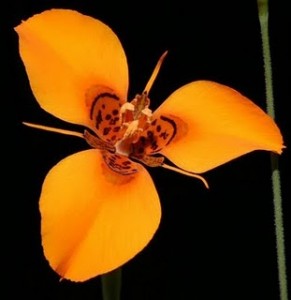 on the validity of a great idea…
on the validity of a great idea…
shelf seemingly made it – albeit without my knowledge – into a high end interior design architecture magazine in Indonesia and New York…
well done then, right?
let’s hope the lava stone cubes attract somebody else attention, too…
Posted in design
Leave a comment
pipajo seating/light/storage display
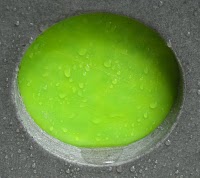
the last few months of 2008 I created new products with a local natural stone importer and design company.
we converted lava, granite and travertine slabs into “boxes” with cover lids and drilled decorative patterns into them, inserted colorful glass, metal mesh or… nothing.
the stone boxes – for in- and outdoor use – function as seating, storage, lights, display space –whether on or in the box, a beautiful potted plant gains instant centre stage!
they are currently displayed outside the showroom at Sophia Road/Trinity Church Artist Centre Singapore and will also be seen and sold at the Emily Hill Creative Art and Research Centre from March 09 onwards

Trinity Church Showroom (on a windy, rainy day…)
we hope to establish a small cottage industry using and combining recycled and/or rest materials and create new, useful and interesting products, engaging and employing the handicapped and other disadvantaged people of our small society.
Posted in design
Leave a comment
pipajo furniture design
 in february 08 we introduced the first of our furniture designs – a shelf unit for the over-sized coffee table books and magazines not fitting into standard shelving units functional but beautiful – with a decorative panel covering the ” boxes” behind
in february 08 we introduced the first of our furniture designs – a shelf unit for the over-sized coffee table books and magazines not fitting into standard shelving units functional but beautiful – with a decorative panel covering the ” boxes” behind
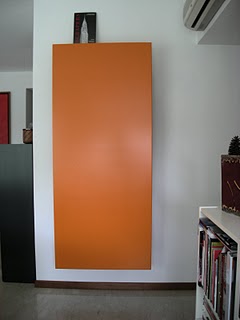
it adds interest and fun to a very practical solution!
please contact us for more information
Posted in design
Leave a comment
indoor gardening
Indoor Gardening – Displaying healthy plants in air-conditioned environments
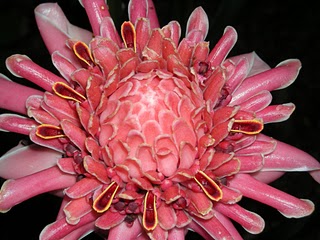
Plants can be therapeutic – growing plants indoors is good for you!
Care for them and you will be rewarded with real organic matter amongst high tech surroundings.br /They improve air quality, emanate an aura of health and freshness and lift your spirit!
The right container and the right combination elevate plant life to living sculptures, a piece of art created by nature.
The overall style and atmosphere a room implies or exudes can be dramatically altered or influenced by a focal plant of vibrant color or a large architectural plant of striking form and shape.
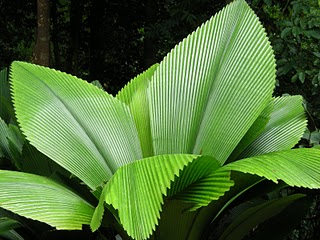
A few, easy-to-follow-guidelines and success is guaranteed!
Keep it simple – a few, well chosen, perfectly placed and well cared for plants are immensely rewarding. The “less- is- more” philosophy applies: one bold, large plant in a small/medium sized room is enough where as small plants are very appealing grouped together.
A successful combination of the right plants in beautiful containers enhances a room’s interior.br /Room styles – informal or formal, classic or modern, rustic or eclectic – define to a great extent the choice of container and plants.br /br /Today’s often contemporary interior spaces are about less clutter and lots of light – the perfect setting for plant display: in a predominantly white, minimal space a simple orchid in a beautiful plain pot makes a spectacular statement of elegance and purity!
To form balance and harmony, keep scale and proportion. The plant has to complement the room’s size and height and the style of furnishing: big, bold architectural plants need space, and small arrangements are best suited for more intimate spaces.
Color can make for a striking focal point and has great emotional impact: white is calming and pure and red is hot and fiery. Echoing existing colors in the room i.e. a coral red cushion on a sofa in a red flowering plant creates an atmosphere of harmonious vibrancy, as contrasting colors can bring drama and excitement to a design.
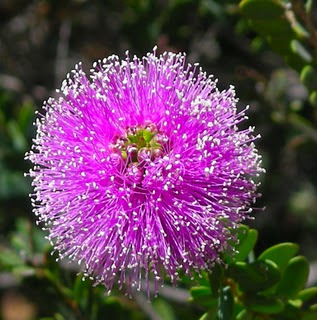
The scent of flowers or foliage is a great additional benefit and especially foliage plants add a rich palette of texture and pattern to a room.
As for containers: they need to complement the interior too, as a beautiful vessel will enhance the overall impression and display the nature’s piece of art to the fullest.
Choosing the right container is extremely important, plain containers will not detract from the plant and blend in well.
By adding top mulches – anything you like and manifests your style – like pebbles, shells, chippings or bark to colored glass pebbles (marbles) and buttons, you can add interest, maintain humidity for the plant and prevent weeds from growing.
Gazebos in plain white ceramic are simply elegant, beautiful baskets enhance the rustic and tropical theme, terracotta is always a good choice; but glazed pots retain water better and are more suited to air-conditioned rooms.br /Repeat the color scheme of your rooms in your plant pots and keep one choice like modern metal containers or bright red ceramic ones to one room each.
A foliage plant may gain from an interesting pot, as with a flowering one an already decorated pot can detract from the flower and be simply too much.
As a simple and general guideline: with a large pot one third should be planting and two thirds the container; as for the smaller ones, the opposite equation applies.
But scale and proportion, with a little practice, can be manipulated to great effect!br /br /If you group plants – do it in odd numbers or in a grid of even ones.
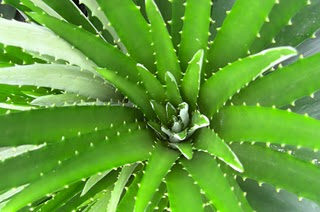
Plants need – just as we do – daylight, food and water and some care and grooming.br /Most houseplants prefer bright, filtered natural light. Look careful at your room, judge the level of light correctly, watch how sunlight travels through the room during the course of a day and visualize the effect you wish to achieve: and then venture out and find the right plant!
Giving them an environment as close as possible to their natural habitual needs is vital.br /When you arrive home, place the plant at the intended place you bought it for.
If you just made a spontaneous buy, find a position which suits and complements most of the plants needs and remember for both occasions: allow two or three weeks for it to settle in. Plants may initially shed flowers and leaves due to transfer shock, but if you keep on providing the right care, they will recover quickly. Do not move them again until the have acclimatized – and, as long as there is no proof that it is not helping: talk to them, let them know they matter!
In general, flowering plants need higher light levels then foliage plants and plants with dark green leaves require less light than those with light green and silvery leaves.
Air-con room temperature should be kept at a level of about 21 – 24 C. To keep the necessary humidity levels up, ornamental trays, filled with a layer of gravel chips, pebbles or clay granules and water will assure enough humidity and allow the plant to feed without the plant sitting in water (as over watering is the killer no. 1 for most houseplants).br /br /For the plants and your health: no standing water ever, regular watering instead!br /If there is a constant level of water in the tray, add a few drops of mosquito / dengue prevention chemicals (to be found at any nursery with a water plant and water features division).
Grouping plants together will also raise the humidity level around them and regular fine misting will too.
Air the rooms – a little breeze ones in a while is enhancing the air quality and the plant’s life.
If you have a balcony or an outdoor area, put them out in the rain at least once a month – it saves you the tedious work of dusting their leaves and this little natural event will be highly appreciated by the plant itself… always remember, there is no such thing as an indoor plant…!
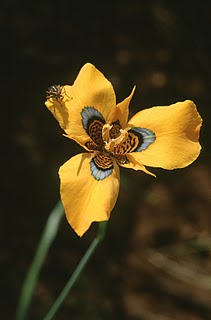
Grooming is a must, too – shape the plants regularly as pruning and dead heading will enhance new and healthy growth and increase production of new flowers.
The right place and the right care will ensure a healthy plant – but in the eventuality of a pest problem: localize it, remove the respective plant and go easy on the chemicals!
A few suggestions for specific environments and design effects:
Shade lovers:Dieffenbachia, Marantha, Calathea, Caladium, Anthurium, Ferns
Sun lovers:Adenium, Ananas, Celosia, Kalanchoe, Eucomis (Pineapple Lily), Stephanotis
Bright light, no direct sun – most houseplants fall into this category:
Dramatic flowers:Tacca, Bromeliads like Tillandsia and Guzmania, Medinilla
Scented flowers: Hedychium, Eucharis and Jasmin, Eucomis and Gardenia
Orchids: Vandas, Phalaenopsis (Moth Orchids) , Cattleya hybrids and Dendrobium
Palms:Phoenix (Date palm) Rhapis (Lady Palm) Cyrtostachys (Sealing Wax palm)
Small plants: Episcia, Selaginella, Pilea , Fittonia and Soleirolia
Bold foliage:Monstera, Philodendron, Xanthosoma, Anthurium and Grevillea
Colored Foliage: Calathea, Codiaeum, Dracaena, Marantha and Solenostemon
Air-Purifiers:Draceana fragrans, Ficus benjamina (Weeping Fig) , Schefflera arboricola, Spathiphyllum wallisii (Peace Lily)
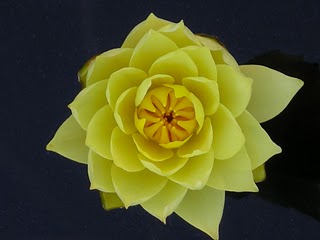
Gabriela Sidler Andermatt ©
zimmer gaerten in singapur
Indoor Gardening – Gestaltung, Pflegetipps and Portraits
Der Ursprung der Zimmerpflanzenkultur liegt in Skandinavien, wo man seit altersher Pflanzen ins Haus holte, wenn die Oede der langen Winter begann.
 Klimatisch findet hier das “Nordische”allerdings nur Drinnen statt… und was uns zu Hause in Miniform auf dem Fenstersims Freude (und manchmal auch Pflegekummer) bereitet hat, begegnet uns hier in den Tropen in beindruckenden Dimensionen in freier Natur!
Klimatisch findet hier das “Nordische”allerdings nur Drinnen statt… und was uns zu Hause in Miniform auf dem Fenstersims Freude (und manchmal auch Pflegekummer) bereitet hat, begegnet uns hier in den Tropen in beindruckenden Dimensionen in freier Natur!
Pflanzen haben, zweifelslos, therapeutische Wirkung. Sie sind nicht nur wunderbare Gestaltungsobjekte, sondern sie verbessern die Luftqualitaet, kreieren eine Aura von Gesundheit und Frische und heben die Stimmung; Beschaeftigung mit ihnen lenkt von Stress und Sorge ab und vermittelt sinnliche Freude.
Jedem Pflanzenkauf sollten jedoch eine Ueberlegungen vorausgehen, damit die Wohngemeinschaft allseits erfreulich ist. Die wichtigsten sind: welche Pflanze passt zu Groesse und Stil meiner Wohnung und welchen Standort bezueglich Licht verlangt die Pflanze meiner Wahl?
Der Stil und die Atmosphaere eines Raumes kann dramatisch veraendert oder beeinflusst werden mit einer Pflanze, die durch Farbe und Bluetenpracht oder ihre architektonisch interessante Form, die sehr grafisch oder wie eine Skulptur wirken kann, besticht und so zum Mittelpunkt wird.

Klimatisch findet hier das “Nordische”allerdings nur Drinnen statt… und was uns zu Hause in Miniform auf dem Fenstersims Freude (und manchmal auch Pflegekummer) bereitet hat, begegnet uns hier in den Tropen in beindruckenden Dimensionen in freier Natur!
Pflanzen haben, zweifelslos, therapeutische Wirkung. Sie sind nicht nur wunderbare Gestaltungsobjekte, sondern sie verbessern die Luftqualitaet, kreieren eine Aura von Gesundheit und Frische und heben die Stimmung; Beschaeftigung mit ihnen lenkt von Stress und Sorge ab und vermittelt sinnliche Freude.
Jedem Pflanzenkauf sollten jedoch eine Ueberlegungen vorausgehen, damit die Wohngemeinschaft allseits erfreulich ist. Die wichtigsten sind: welche Pflanze passt zu Groesse und Stil meiner Wohnung und welchen Standort bezueglich Licht verlangt die Pflanze meiner Wahl?
Der Stil und die Atmosphaere eines Raumes kann dramatisch veraendert oder beeinflusst werden mit einer Pflanze, die durch Farbe und Bluetenpracht oder ihre architektonisch interessante Form, die sehr grafisch oder wie eine Skulptur wirken kann, besticht und so zum Mittelpunkt wird.

Farben im Raum bei der Wahl der Pflanze zu wiederholen (in Blueten und Blatt) kreiert Harmonie – oder Drama: korallenrote Sofakissen in Kombination mit einem Anthurium (Flamingoblume) schafft eine Einheit, hingegen kann die Wahl einer schwarzen Blume wie der Tacca chantrieri ganz schoen dramatisch und aufregend wirken.
Sowie Muster und Struktur sind der Duft von Blueten und Blaettern ein interessanter und anziehender Zusatzbonus – die Natur hat eine grosszuegige und beeindruckende Palette dieser Elemente bereitgestellt.
Etwas ganz Wichtiges ist die richtige Wahl von Uebertoepfen, Vasen und Gefaessen.
Schoene Uebertoepfe sind zusaetzliche Gestaltungselemente, die die Pflanzen erst so richtig zur Wirkung bringen und in Kombination eine enorme optische Bereicherung fuer den Raum darstellen. Sie sollten den Einrichtungsstil komplimentieren oder ganz bewusst kontrastieren!
Immer passend sind simple, uni-farbene Gefaesse, da sie nicht von der Pflanze noch von der restlichen Einrichtung ablenken und einblenden. Sie sind in allen moeglichen Materialien wie Keramik, Porzellan, Glass, Metall, Kunststoff, Holz, Korb und Rattan zu haben. Beachten Sie, dass der Uebertopf mindestens eine Fingerbreite groesser ist als der Pflanzentopf!
Die dominierende Farbe des Raumes in der Wahl der Uebertopfe zu wiederholen kann sehr harmonisch wirken, wenn man sich auf eine Farbe und eine Materialart pro Raum beschraenkt. Eine einfarbige Blattpflanze kann durchaus durch einen farbigen, interessanten Behaelter an Wirkung gewinnen, hingegen wird eine Bluetenpflanze in einem Topf mit farbigen Sujets zuviel des Guten sein.
Einfache, weisse Keramikuebertoepfe sind immer elegant, Korbwaren sind eher rustikal und koennen das Tropenthema herausheben und betonen, Terracotta ist grundsaetzlich eine gute Wahl, obwohl glasierte Toepfe fuer klimatisierte Raeume besser geeignet sind, da sie weniger schnell austrocknen.
Wenn man Topmaterial (Mulch) zufuegt, einerseits aus Dekorations- und andererseits aus Pflegegruenden, gestaltet man die “gruene Zone” interessanter und verhindert zudem das schnelle Austrocknen der Erde: einige Beispiele waeren bunte Glassmurmeln, gesammelte Muscheln, kleinere Steine, Baumrinde oder sogar Knoepfe… Ihrer Fantasie sei freien Lauf gelassen!
Eine einfache und sehr generelle Richtlinie bezueglich Dimensionen: in einem grossen Topf sollte ein Drittel Pflanze und zwei Drittel der Behaelter sein, fuer kleine gilt das Umgekehrte – aber wie mit allem so auch hier: Masstab und Proportionen koennen, mit ein wenig Uebung, sehr effektvoll manipuliert werden!
Bezueglich Anzahl von Pflanzen gilt, dass sie in ungeraden Mengen gruppiert oder in einem Muster von geraden gestellt werden sollten.
Pflanzen, genauso wie Menschen, brauchen Licht, Wasser, Nahrung und Pflege.
Richtig giessen, duengen und schneiden sind wichtig, aber zur erfolgreichen Pflanzenpflege gehoeren auch Zuneigung, Fingerspitzengefuehl und Wissen um die individuellen Beduerfnisse.
Pflanzen sollten ein Umfeld haben, das ihrer natuerlichen Umgebung (Herkunft und Lebensbedingungen) so nahe wie moeglich entspricht – das Nachempfinden heimatlicher Gegebenheiten ist eines der grossen Pflegegeheimnisse und der wichtigste Erfolgsfaktor!

Die meisten Zimmerpflanzen bevorzugen helles, gefiltertes Licht aber keine direkte Sonne. Schauen Sie sich Ihren Raum genau an, bewerten Sie die Lichtverhaeltnisse und beobachten Sie, wie die Sonne im Tagesverlauf den Raum durchquert und vorallem, probieren Sie sich vorzustellen, welchen Effekt Sie erzielen moechten, und dann erst machen Sie sich auf die Suche nach der richtigen Pflanze und dem passenden Behaelter.
Wenn Sie nach Hause kommen, plazieren Sie sie an den vorbestimmten Platz – und wenn Sie einen ganz spontanen Einkauf gemacht haben, dahin, wo die Beduerfnisse bestmoeglichst erfuellt werden – und dann gilt fuer beide Situationen: lassen Sie ihnen zwei bis drei Wochen Zeit, sich an ihr neues Zuhause zu gewoehnen! Pflanzen koennen Blueten und Blaetter durch den “Transfer-shock” verlieren, aber wenn Sie ihnen Aufmerksamkeit und Pflege goennen, werden sie sich schnell erholen. Versetzen Sie sie nicht, bis sie sich akklimatisiert haben – und solange der Beweis, dass es nichts nuetzt, nicht erbracht ist: Reden Sie mit ihnen und streicheln Sie ruhig mal ueber das Laub!
Ganz generell ist zu beachten, dass Bluetenpflanzen groessere Lichtansprueche stellen als Blattpflanzen, und dass Pflanzen mit dunkelgruenen Blaettern weniger Licht benoetigen als hellgruene und silberfarbene.
Klimatisierte Raeume sollten zwischen 21 – 24 Grad C gehalten werden.
Um die ideale Luftfeuchtigkeit zu erzielen (fuer alle Lebewesen!) empfiehlt es sich, eine flache Schale (z.B. ein Kuchenblech) mit einer Lage Kieselsteinen oder Tongranulat und Wasser zu fuellen und die Pflanzen darauf zu plazieren – so koennen sie sich ganz einfach die richtige Menge Wasser besorgen.
Eine Gruppe von Pflanzen erhoeht sich gegenseitig den Feuchtigkeitsgehalt, allerdings sollten sie nicht zu eng stehen, denn sie brauchen Luft zum Atmen und als Schutz vor Ungeziffer. Regelmaessiges feines Bespruehen empfiehlt sich in klimatisierten Raeumen natuerlich auch.
Der meistgestorbene Tod von Zimmerpflanzen ist das Ueberwaessern, sie werden regelrecht ersaeuft… auch hier gilt die “Weniger ist Mehr” – Philosophie!
In Uebertoepfen immer dafuer sorgen, dass die Pflanze nicht im Wasser steht, da sich sonst sehr schnell die Gefahr von Faeulniss einstellen kann (auch hier auf eine Lage Kieselsteine oder Blaehton stellen).
Gruenes braucht frische Luft – regelmaessiges Lueften erhoeht die Luft- und die Lebensqualitaet!
Wenn Sie einen Balkon oder Vorplatz haben, stellen Sie sie ab und zu (vielleicht einmal pro Monat) nach draussen in den Regen: es befreit Sie vom laestigen Abstauben der Blaetter und die Pflanze profitiert von diesem natuerlichen Bewaessern: denn es gilt nie zu vergessen, dass es eigentlich keine Zimmerpflanzen gibt…!
Auch Pflege der Erscheinung ist etwas Wichtiges, denn in Form schneiden und Verbluehtes entfernen, haelt sie gesund und foerdert neues Wachstum.
Die richtige Pflanze am richtigen Ort und die artgemaesse Pflege stellt Gesundheit sicher, sollten sich aber trotzdem Schaedlinge einschleichen: die betroffene Pflanze entfernen und so wenig Gift wie moeglich verwenden. Meist ist es ausreichend, die betroffenen Teile der Pflanze zu entfernen und die Pflanze zu bespruehen – im Freien!
Richten Sie sich nach den empfohlenen Spritzintervallen, um auch die nachfolgende Schaedlingsgeneration zu vernichten.

Eine einfache Faustregel fuer das Duengen von Pflanzen: lieber oefter und in niedrigen Dosen als selten und hochdosiert – und nicht vergessen, dass Duengen nicht das Umtopfen ersetzt: wenn starke Wurzeln aus dem Topf ragen oder – was auch schon mal vorkommen kann – die Pflanze den Behaelter sprengt: rausnehmen, saeubern, Wurzeln zurueckschneiden und mit frischer Erde und Substraten neu einpflanzen und angiessen.
Zum Schluss noch einige Pflanzenvorschlaege fuer spezifische Umgebungen und Gestaltunsgeffekte:
(Ich hoffe, dass Sie sich vielleicht das Internet zur Identifikation zu Hilfe nehmen koennen oder einen Tropischen Pflanzenfuehrer, die im “Kinokunya” Buchladen sogar in Deutsch erhaeltlich sind)
Schattenliebhaber Dieffenbachia, Marantha, Calathea, Caladium und Farne
Sonnenliebhaber Adenium, Ananas, Celosia, Kalanchoe, Eucomis (Ananas Lilie)
Stephanotis, Passiflora
Sonnenliebhaber Adenium, Ananas, Celosia, Kalanchoe, Eucomis (Ananas Lilie)
Stephanotis, Passiflora
Hell, aber keine direkte Sonne (die meisten Hauspflanzen gehoeren in diese Kategorie):
Dramatische Blueten:
Tacca, Bromeliaden wie Tillandsia und Guzmania, Medinilla
Duftende Blueten:
Duftende Blueten:
Hedychium, Eucharis, Jasmine, Eucomis und Gardenien
Orchideen:
Orchideen:
Vandas, Phalaenopsis, Cattleyas, Dendrobium
Palmen:
Palmen:
Phoenix (Dattelpalme), Rhapis, Cyrtostachys (Rote Wax Palme)
Kleine Pflanzen:
Kleine Pflanzen:
Episcia, Selaginella, Pilea, Fittonia, Soleirolia
Grossblaettrige:
Grossblaettrige:
Alocasia, Monstera, Philodendron, Xanthosoma, Grevillea
Farbige Blaetter:
Farbige Blaetter:
Calathea, Codiaeum, Dracaena, Marantha, Solenostemon
Luftreiniger;
Dracaena fragrans, Ficus benjamina, Schefflera arboricola
Spathiphyllum wallisii
Luftreiniger;
Dracaena fragrans, Ficus benjamina, Schefflera arboricola
Spathiphyllum wallisii

Gabriela Sidler Andermatt ©
Posted in plants
Leave a comment
pipajo furniture designs / pipajo moebel design
gestell fuer buecher und magazine in uebergroessen
im februar 08 haben wir das erste pipajo moebel desgin verwirklicht – ein funktionales und doch attraktives buechergestell fuer alle “uebergroessen”, die nicht in standard gestelle passen

das dekorative panel bringt farbe und “ruhe” in den raum
eine auesserst praktische loesung schoen verpackt!
bitte kontaktieren sie uns unter info@pipajo.com fuer mehr information
Posted in design
Leave a comment

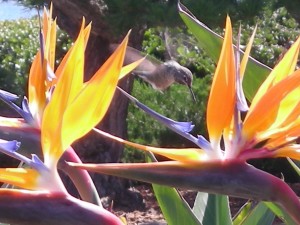
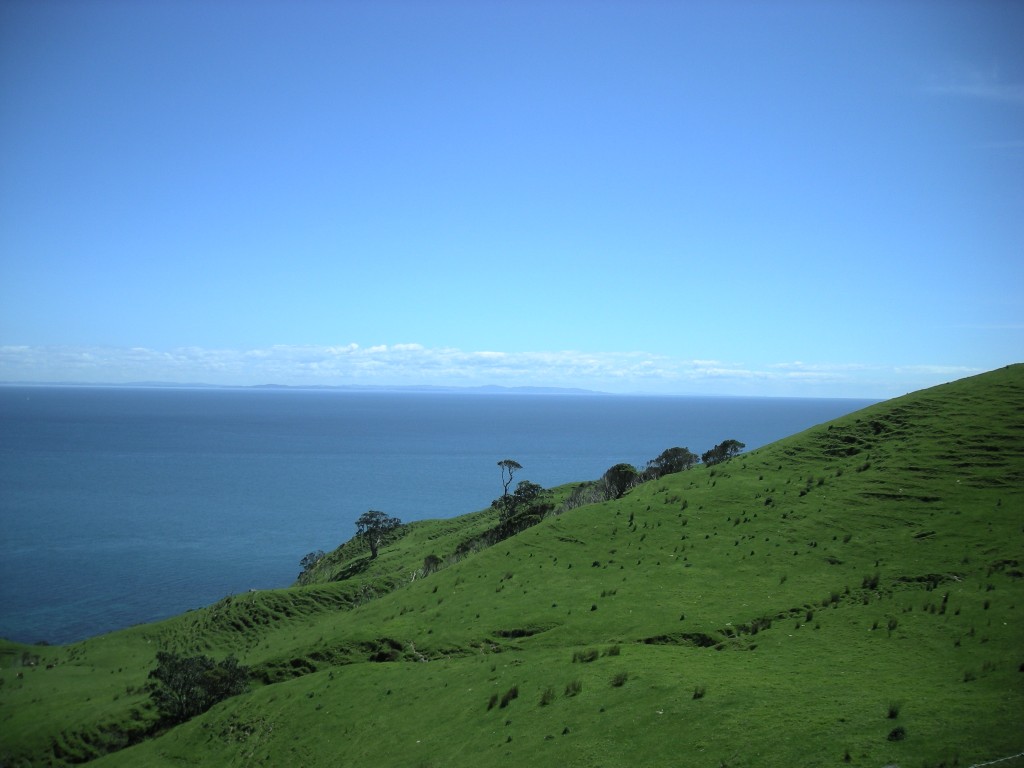

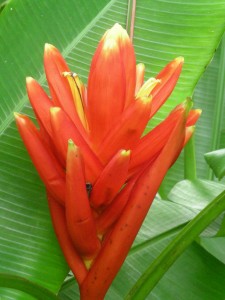
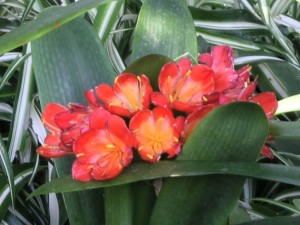
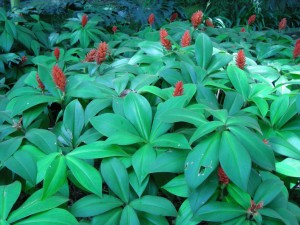
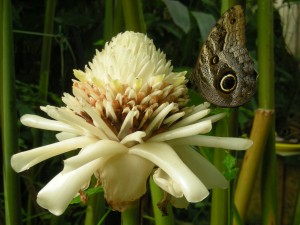
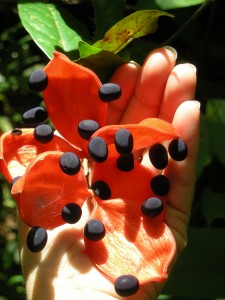
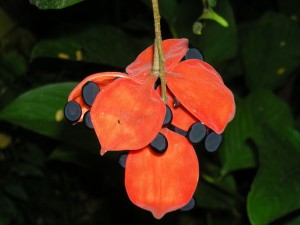
 what an ingenious use for ping-pong balls…!!!
what an ingenious use for ping-pong balls…!!! …. for every day
…. for every day